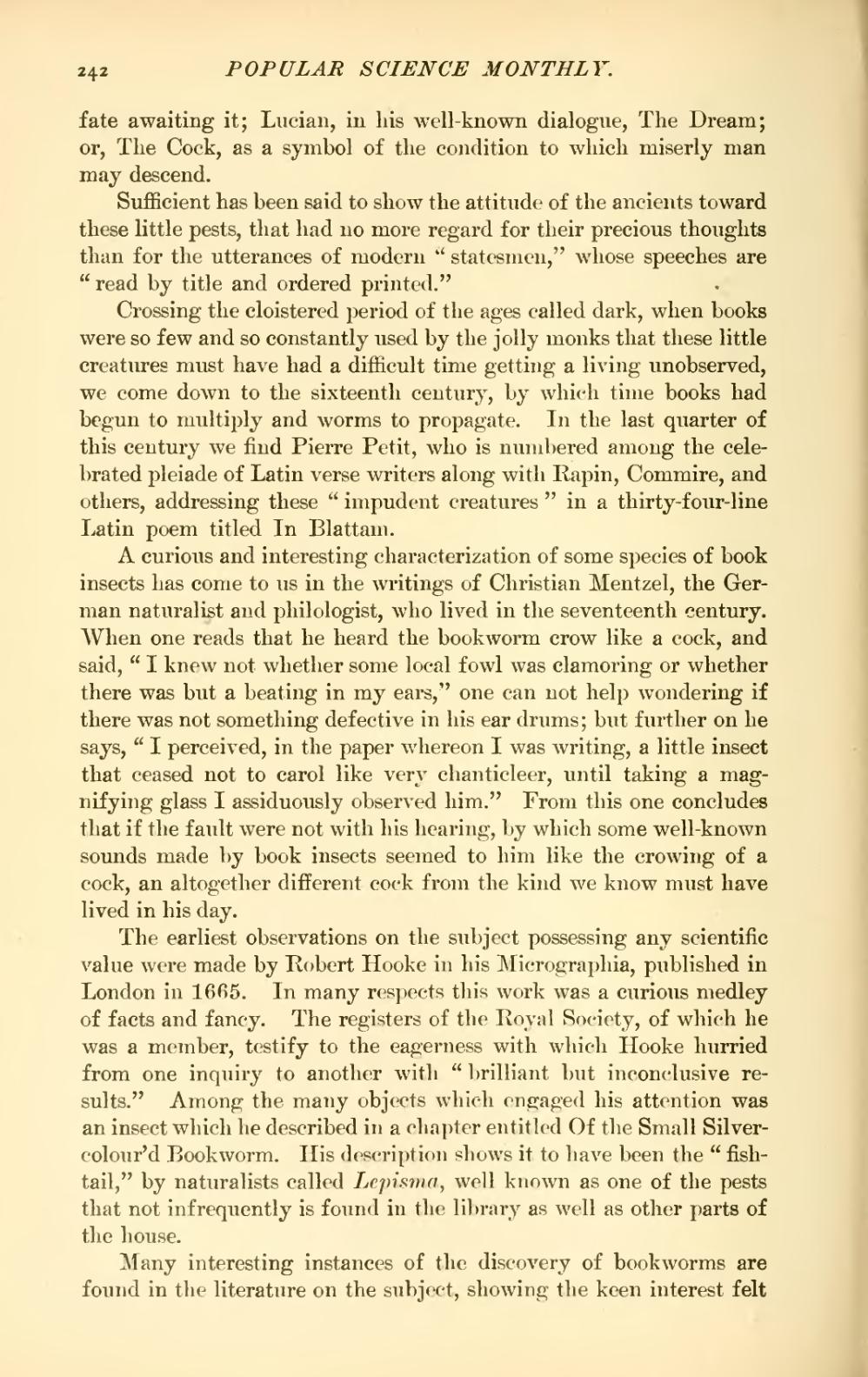fate awaiting it; Lucian, in his well-known dialogue, The Dream; or, The Cock, as a symbol of the condition to which miserly man may descend.
Sufficient has been said to show the attitude of the ancients toward these little pests, that had no more regard for their precious thoughts than for the utterances of modern "statesmen," whose speeches are "read by title and ordered printed."
Crossing the cloistered period of the ages called dark, when books were so few and so constantly used by the jolly monks that these little creatures must have had a difficult time getting a living unobserved, we come down to the sixteenth century, by which time books had begun to multiply and worms to propagate. In the last quarter of this century we find Pierre Petit, who is numbered among the celebrated pleiade of Latin verse writers along with Rapin, Commire, and others, addressing these "impudent creatures" in a thirty-four-line Latin poem titled In Blattam.
A curious and interesting characterization of some species of book insects has come to us in the writings of Christian Mentzel, the German naturalist and philologist, who lived in the seventeenth century. When one reads that he heard the bookworm crow like a cock, and said, "I knew not whether some local fowl was clamoring or whether there was but a beating in my ears," one can not help wondering if there was not something defective in his ear drums; but further on he says, "I perceived, in the paper whereon I was writing, a little insect that ceased not to carol like very chanticleer, until taking a magnifying glass I assiduously observed him." From this one concludes that if the fault were not with his hearing, by which some well-known sounds made by book insects seemed to him like the crowing of a cock, an altogether different cock from the kind we know must have lived in his day.
The earliest observations on the subject possessing any scientific value were made by Robert Hooke in his Micrographia, published in London in 1665. In many respects this work was a curious medley of facts and fancy. The registers of the Royal Society, of which he was a member, testify to the eagerness with which Hooke hurried from one inquiry to another with "brilliant but inconclusive results." Among the many objects which engaged his attention was an insect which he described in a chapter entitled Of the Small Silver-colour'd Bookworm. His description shows it to have been the "fish-tail," by naturalists called Lepisma, well known as one of the pests that not infrequently is found in the library as well as other parts of the house.
Many interesting instances of the discovery of bookworms are found in the literature on the subject, showing the keen interest felt
